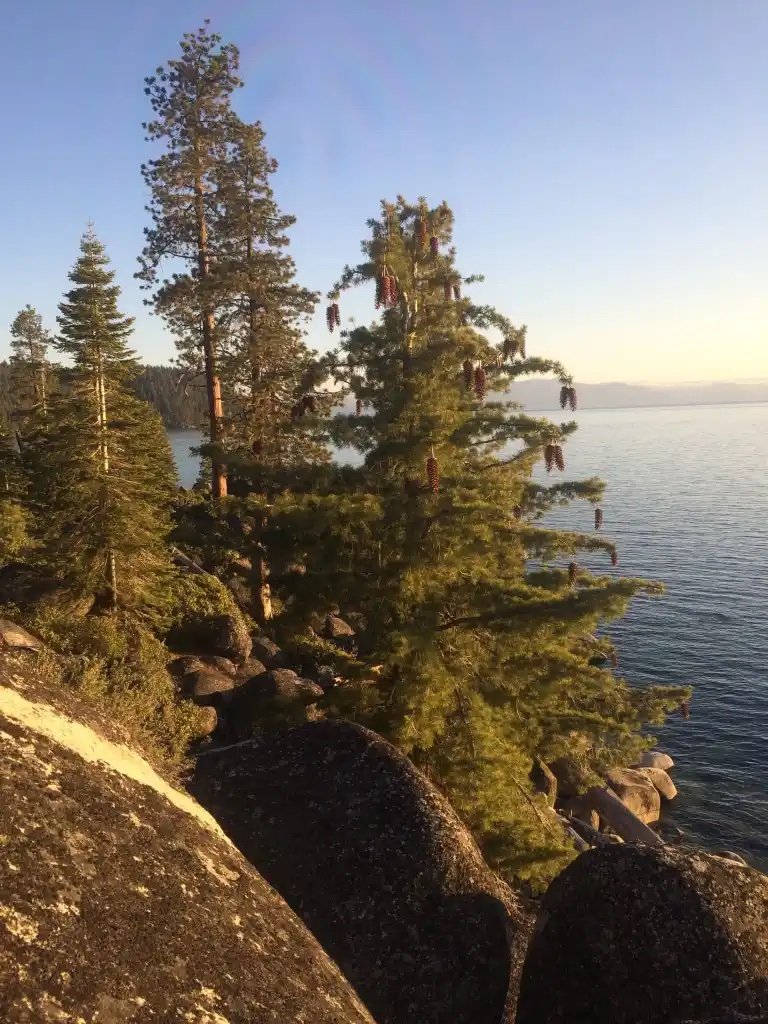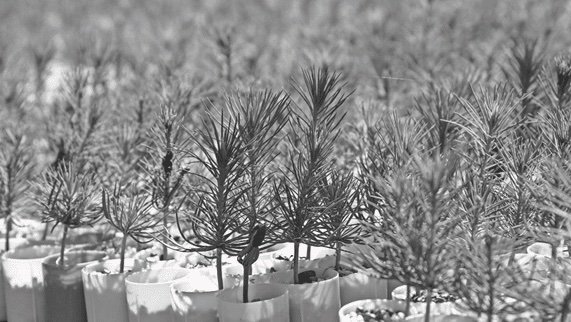Recent Feature In Reno Gazette Journal
TAHOE’S PINES DYING AT ALARMING RATE
By Amy Alonzo
SPF identifies and plants seeds of trees that are resistant to fatal fungus
A thick blanket of snow covers the Tahoe Basin, its grasses and trees dormant as they wait for spring.
But tucked in an office on the southwest shore of Lake Tahoe, Sugar Pine Foundation Executive Director Maria Mircheva is busy sprouting ideas for the coming spring that will shape the future of what Lake Tahoe’s forests look like.
Across the West, sugar pines, western white pines and whitebark pines are being threatened by white pine blister rust, an invasive fungus, and trees are dying at an alarming rate. The Tahoe Basin is not immune to the infestation.
A volunteer collects cones from a tree that is genetically resistant to white pine blister rust.
The fungus is incurable in infected trees, but about five percent of sugar pines and western white pines possess a natural resistance to the fungus.
And the Sugar Pine Foundation is taking steps to ensure those trees spread their seeds far and wide across the basin.
The group identifies trees resistant to the fungus, collects their seeds and replants them, planting about 10,000 seedlings around the basin each spring and summer.
The work is time-consuming, and recent wildfires in the Tahoe area have compounded the problem.
“We plant a lot of seeds in the ground, but it’s even more important to plant seeds in people’s minds, so we get people to care,” Mircheva said. “We have to make it part of their lives.”
Saving the world’s largest pine trees
White pine blister rust was first dis- covered in the United States around 1900 when it was introduced on pine seedlings imported from Europe. It spreads through spores in the air, and, on the West Coast, has been working its way from north to south.
In the Tahoe Basin, it impacts native sugar pines, western white pines and whitebark pines.
Sugar pines are the world’s largest pine tree. They can grow to more than 100 feet tall, and their cones can grow more than a foot long.
Western white pines look similar but have smaller cones and a more checkered-style bark. Whitebark pines grow at the highest elevations – if you’ve hiked the Mt. Rose trail, you’ve seen whitebark pines, an important food sources for Clark’s nutcracker.
There is no known resistance to the fungus in whitebark pine. It is estimated that nationally, as of 2016, more than half of all standing whitebark pine trees are dead, and in December, the U.S. Fish and Wildlife Service listed the tree as threatened under the Endangered Species Act.
Hundreds of seedlings await planting.
Planting seeds of change
In the mid-1900’s, scientists discovered that some trees have a genetic resistance to white pine blister rust.
That research is what the foundation builds its work on.
In 2004, John Pickett, a Forest Service technician, noticed the invasion in the Tahoe Basin. He formed the Sugar Pine Foundation the following year.
Since then, the foundation has tested more than 500 sugar pines in the Truckee-Tahoe area for resistance, and 66 have been identified as resistant to the fungus.
An additional 150 western white pines have been tested; just four of the tested trees were found to have the genetic resistance to the fungus. Three of the trees are located at Heavenly Mountain Resort and one is at Kirkwood Mountain Resort.
In the fall, volunteers and contractors climb the genetically-resistant trees to collect the cones. The climbers use long-handled pruners to trim the cones off, sometimes walking out on the branches to shake the limbs until the cones fall off.
A ground crew collects them and puts them in burlap sacks. Each cone has dozens of seeds in it, and last fall, about 200,00 seeds were collected.
Seeds are sent to the U.S. Forest Ser- vice Placerville Nursery for processing and storage. The Forest Service keeps half of the seeds for their own restora- tion needs; the agency also sprouts seeds for the foundation. Other seeds are sent to a private nursery in northern California outside Mt. Shasta.
The process of sprouting the seed- lings involves mimicking outside conditions. The seeds, which normally are released from cones in September, then buried beneath a layer of insulating snow, are soaked for three days to imitate fall rain, then put in a refrigeration unit to “overwinter.” The seeds are pulled from storage in spring for planting.
“It’s not like you just put the seed in the ground and it grows,” Mircheva said. With other threats including wildfires and bark beetle infestations, the foundation has expanded its work to include other tree species, including Jeffrey pines, red fir, incense cedar and white fir.
Last year, the foundation planted more than 13,000 seedlings, primarily in the Caldor, Tamarack and Loyalton Fire scars. In 2021, the foundation was part of a pilot program that used drones to reseed the scorched Dog Valley area outside Reno.
The foundation might not be changing the world, Mircheva said, but it’s giving it a nudge in the right direction.
Amy Alonzo covers the outdoors, recreation and environment for Nevada and Lake Tahoe. Reach her at aalonzo@gannett.com.
1458 Mt. Rainier Drive, South Lake Tahoe, CA 96150 | (650) 814-9565 | admin@sugarpinefoundation.org




